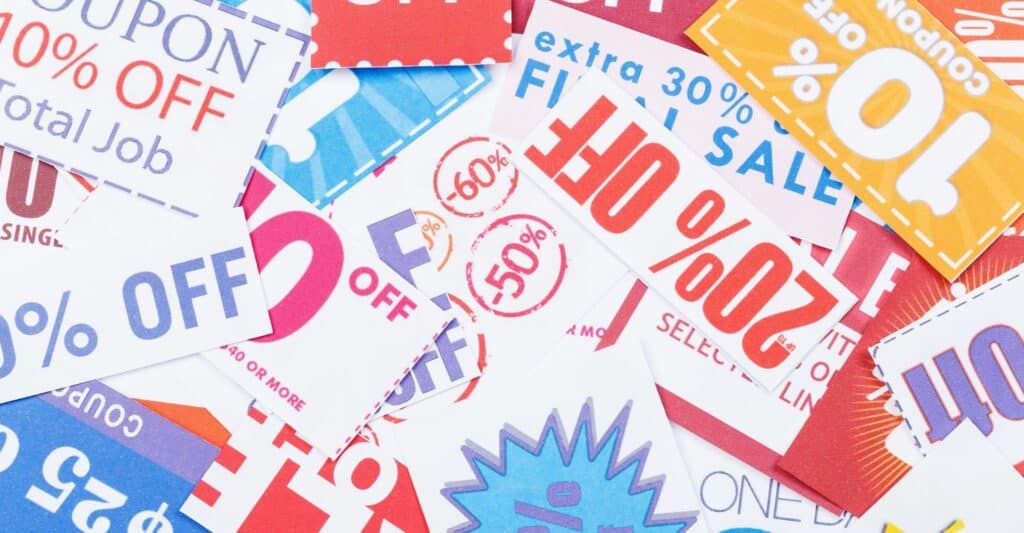Here’s the thing.
Every shopper loves a good deal.
In fact, Statistics Portal, Statista in early 2021 reported a staggering 92 percent of consumers that use coupons when shopping.
With so many customers leveraging coupons, discounts, and other promos, it makes perfect sense to implement a robust promotional strategy for your eCommerce store.
While you can offer discounts directly on your store, you’re better off listing your products on deal sites such as Groupon, Dealfind, or marketplaces like Amazon.
Why? Because partnering with deal sites can be the differentiating factor your business needs to stay ahead of the curve and increase sales.
Let’s explain that in a sec.
Customers Genuinely Like Shopping Discounts
Think about some of your best experiences with brands you love. Chances are, you’re loyal to brands that have made you feel appreciated and valued. Certainly, you favor businesses that offer discounts or rewards. Who doesn’t?
Also, offering discounts and shopping coupons trigger an adrenaline rush in customers. Seriously. A study commissioned by Coupons.com found that shoppers who receive coupons experience a 38% rise in oxytocin levels and are 11% happier than those who don’t get a coupon.
A separate research by Bizrate Insights established that consumers of all ages regarded discounts and coupons as “very important” during their digital purchasing decisions.
The point is that giving discounts and coupons can benefit your eCommerce store in good and bad times – and what better way to do it than list your merchandise on deal sites.
That said, read on to find out how selling on deals sites and Amazon can help you boost your eCommerce store’s revenue.
You’ll Be Right Where Shopping Begins
Many people start their online shopping experiences on a marketplace such as Amazon.
Sure, Google is still important, but according to the Amazon Advertising Report by Jungle Scout, up to 74% of shoppers in the United States begin their product searches on Amazon.
Up to 56% of these consumers say that if they’d buy products from a single store, it would be Amazon.
Inversely, only 21% of online shoppers begin their product searches directly on retail websites, according to Survata
People want to shop on Amazon because of the discounts, free shipping, and convenience, as per a report from Epsilon.
With over 200 million people thronging Amazon every month, placing your products on the marketplace gives you a significant chance of closing more sales than you store. That makes sense, right?
Selling on Deal Sites = Good Reputation for your Business
Deal sites such as Groupon boast an excellent reputation in the eyes of shoppers. When customers buy on deal sites, they’re confident they receive genuine and quality products. They’re also sure they will receive the item in a few days.
Further, the financial exchange is a major concern. Consumers trust reputable deal sites with credit card information. They’re also confident that they won’t receive unsolicited emails from merchants.
With a whopping 100 million online customer accounts compromised by data breaches, shoppers are understandably hesitant to give their credit card info.
While you may not be an unscrupulous eCommerce business owner, you might struggle to create customer trust, especially with people who are shopping on your site for the first time. Certainly, this will hurt your sales.
Trust matters when it comes to running a successful eCommerce business. Trust helps create customer loyalty. With loyalty comes repeat business. And this is a big deal. Why? Because repeat customers fuel about 15% of an average store’s sales.
The fact is, listing your products on credible deal sites can help bypass customer trust issues, enabling you to generate more revenue.
Deal Sites Have the Numbers
Large deal sites and shopping marketplaces offer a centralized location to reach your target customers. Think of these as departmental stores, where multiple stores come together to sell their merchandise.
And, numbers don’t lie. With 2022 projected to be the first trillion-dollar year for online sales, there’s no better time to list your products on eCommerce coupons and rebate websites.
By being on these platforms, you can leverage shoppers with a readily disposable income. While you’ll want to drive customers directly to your website through SEO, social media, content, and email marketing, these strategies take time.
Deals sites and marketplaces, on the other hand, enable you to put your products in front of target buyers right now.
You must be thinking – won’t you have to pay to place your products on rebate websites or a marketplace like Amazon?
Yes. In most cases, it’ll cost you a little money. Some sites take a certain percentage straight off your sale. Others charge flat monthly fees.
However, even though your cost will increase slightly for each product, you can always draw a reasonable margin by implementing smart pricing structures.
Deal Sites Help Move Old Inventory

Mastering your inventory management strategy is crucial for eCommerce retailers. However, you may have too much inventory on hand from time to time, which can lead to a significant cash drain.
By using e-commerce coupons and rebates sites, you can sell slow-moving merchandise in your inventory or unutilized services. Offering discounts is an excellent and compelling strategy for merchants with low cost of goods sold.
You can use price deals to promote products that are not that expensive. A Groupon type of promotion, for instance, would be something you can do to offload old inventory and, by extension, bring in more sales for your business.
Customers Value the Ease of Shopping on Deal Sites
There’s something about ordering food at McDonald’s. Irrespective of which restaurant you visit, you can be sure of one thing- the consistent experience. Simply line up, let the cashier know which number of meals you want, and then wait for them to ask you if you’d like to upsize it.
Unless your eCommerce store closely mimics the level of consistency and experience offered by deal sites and marketplaces, they’ll get confused. And if this happens, they’ll move on to a shop that provides a better experience.
In a business world where user experience (UX) is more important than price and product, you’ll want to go an extra mile, even if doing so means listing your merchandise on deal sites.
You can still maintain your store’s unique brand on marketplaces like Amazon using the following strategies:
- Bundling products and offering a better deal on them.
- Sell brands that are truly new in the market.
- Find a marketplace that allows you to sell personalized merchandise.
Conclusion
There’s a lot of money up for grabs on deal sites and marketplaces if you can cast your net wide enough.
Whether your primary source of income or side hustle, your eCommerce store deserves all the breaks it can.
One of the most effective ways to establish a solid foundation and increase sales is to try and test marketplaces like Amazon or deal websites. That way, you can enjoy more leverage than you would with your store.
There’s a catch, though.
Listing your products on deal sites or Amazon is one thing. However, generating actual sales is entirely different.
All the same, you can still find success through Deals Sites, a proprietary strategy by Signalytics.
Your quest to boost sales on deal sites and marketplaces is one Deals Effect away.
Get started with Signalytics’ Deals Sites today and start reaping the success you deserve.

